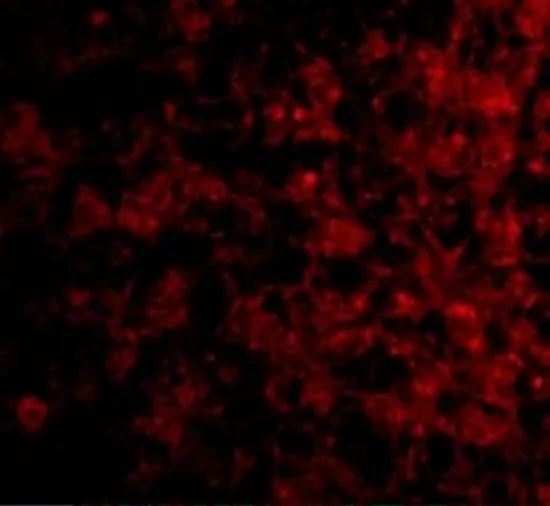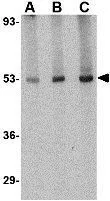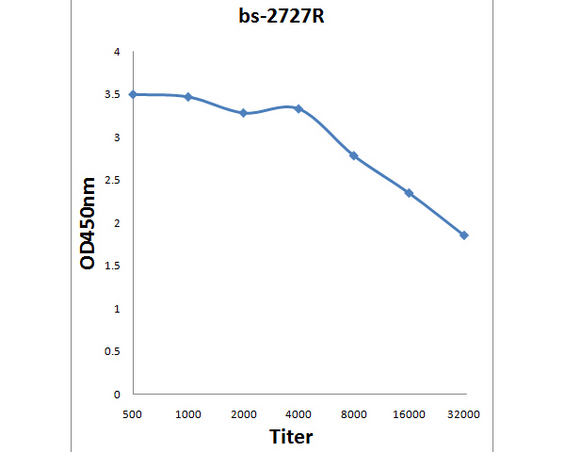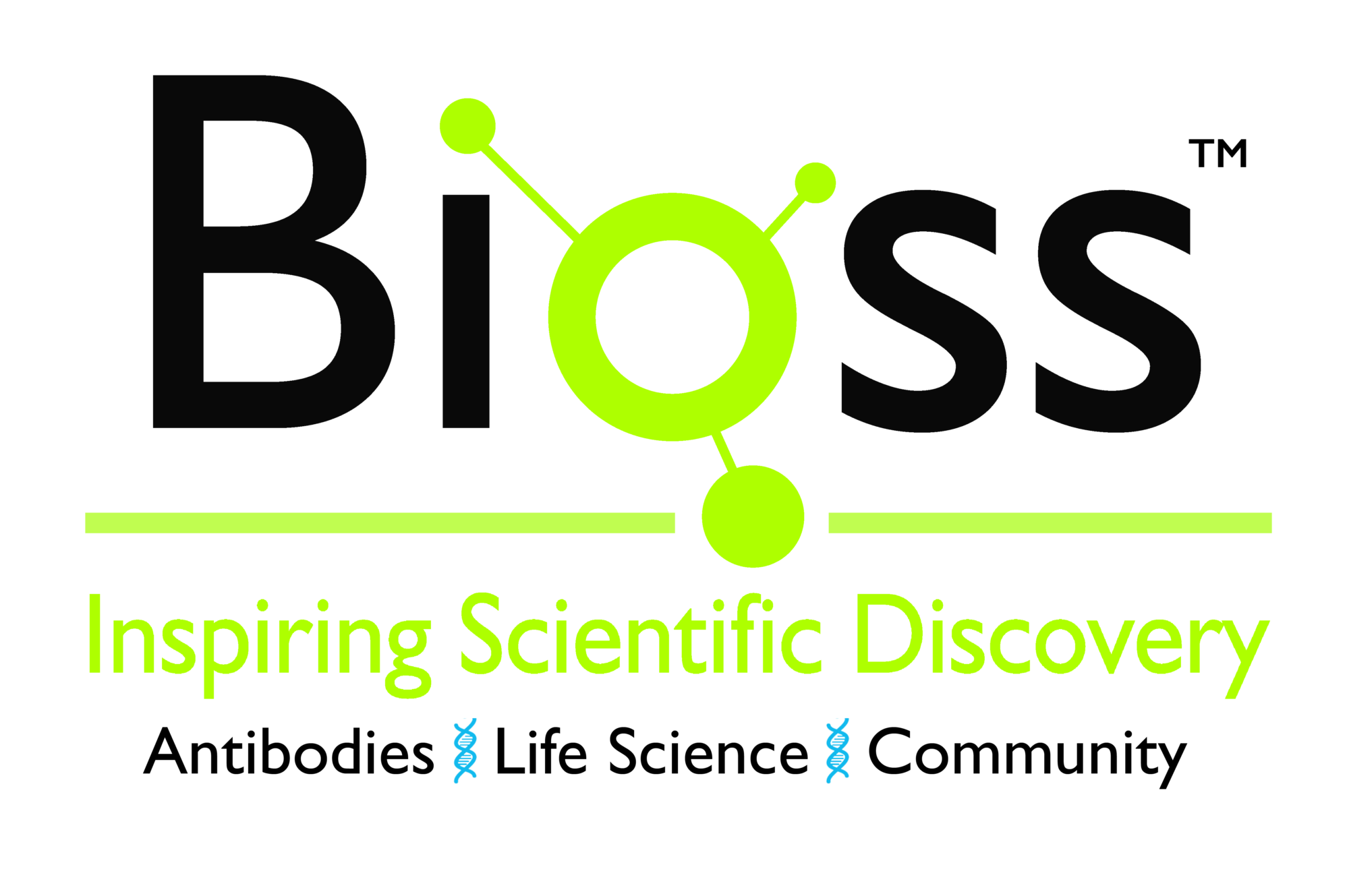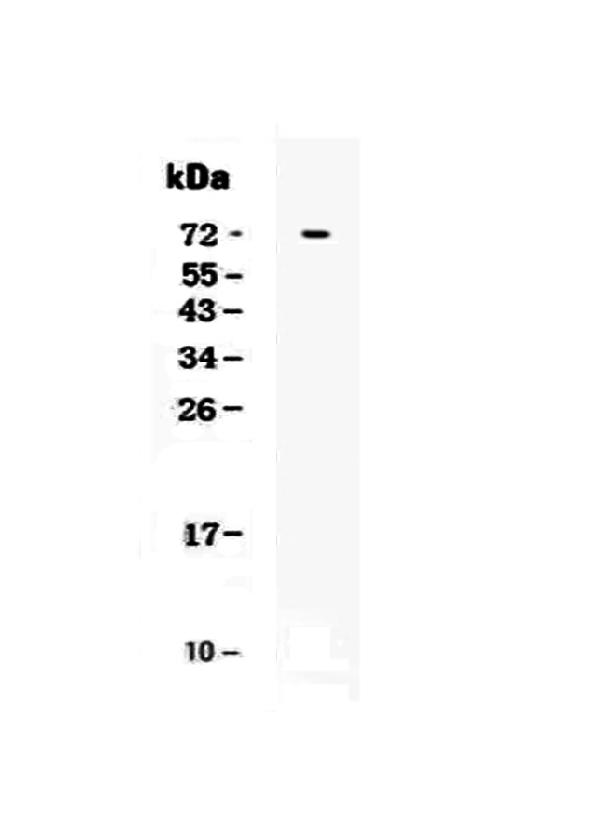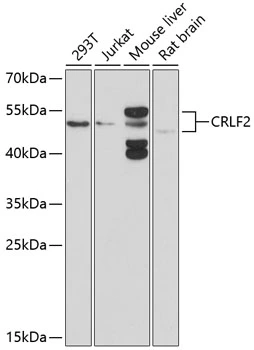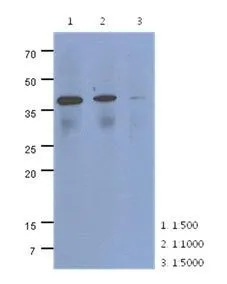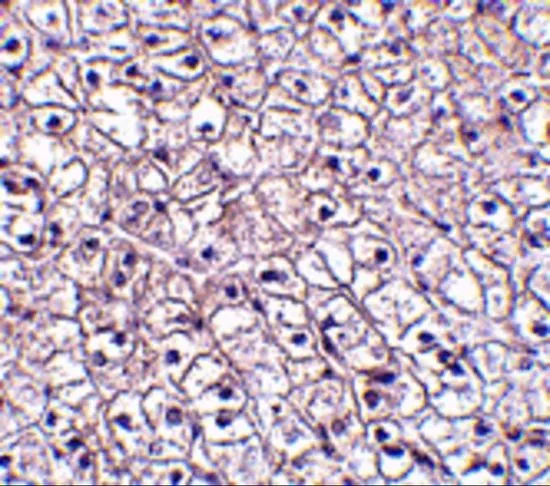
IHC-P analysis of human liver tissue using GTX85052 CRLF2 antibody. Working concentration : 5 microg/ml
CRLF2 antibody
GTX85052
ApplicationsWestern Blot, ELISA, ImmunoHistoChemistry, ImmunoHistoChemistry Paraffin
Product group Antibodies
TargetCRLF2
Overview
- SupplierGeneTex
- Product NameCRLF2 antibody
- Delivery Days Customer9
- Application Supplier NoteWB: 0.5 - 1 microg/mL. IHC-P: 5 microg/mL. *Optimal dilutions/concentrations should be determined by the researcher.Not tested in other applications.
- ApplicationsWestern Blot, ELISA, ImmunoHistoChemistry, ImmunoHistoChemistry Paraffin
- CertificationResearch Use Only
- ClonalityPolyclonal
- Concentration1 mg/ml
- ConjugateUnconjugated
- Gene ID64109
- Target nameCRLF2
- Target descriptioncytokine receptor like factor 2
- Target synonymsCRL2, CRLF2Y, TSLPR, cytokine receptor-like factor 2, IL-XR, TSLP receptor, cytokine receptor CRL2 precusor, thymic stromal lymphopoietin protein receptor, thymic stromal-derived lymphopoietin receptor
- HostRabbit
- IsotypeIgG
- Protein IDQ9HC73
- Protein NameCytokine receptor-like factor 2
- Scientific DescriptionThymic stromal lymphopoietin (TSLP) has recently been identified as an important factor capable of driving dendritic cell maturation and activation. It is involved in the positive selection of regulatory T cells, maintenance of peripheral CD4+ T cell homeostasis and the induction of CD4+ T cell-mediated allergic reaction. TSLP is also capable of supporting the growth of fetal liver and adult B cell progenitors and their differentiation to the IgM-positive stage of B cell development. Its receptor TSLP-R will bind TSLP in a low-affinity fashion in transfected cells; co-transfection with IL-7R-alpha cDNA results in high-affinity binding and a functional heteromeric complex. This heteromeric receptor requires stat5 for TSLP-mediated signal transduction and is inhibited by SOCS-1. Despite its predicted molecular weight, TSLP-R often migrates at a higher molecular weight in SDS-PAGE.
- Storage Instruction-20°C or -80°C,2°C to 8°C
- UNSPSC12352203

